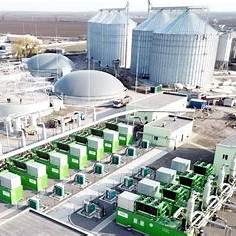Biogas and biomethane are renewable energy sources produced through the anaerobic digestion of organic matter in the absence of oxygen. They are commonly generated at landfills, wastewater treatment plants, and biodigesters, using raw materials such as agricultural waste, manure, municipal waste, plant material, sewage, green waste, and food waste.
The process involves anaerobic bacteria or methanogens breaking down biodegradable materials inside a closed system, known as an anaerobic digester, biodigester, or bioreactor.
Composition and Environmental Impact
Biogas primarily consists of:
- Methane (CH₄)
- Carbon dioxide (CO₂)
- Small amounts of hydrogen sulfide (H₂S), moisture, and siloxanes
Uncontrolled methane emissions are a major environmental concern, as methane has a 104 times higher greenhouse effect than CO₂ over a short period. However, when captured and utilized, biogas serves as an effective low-carbon energy solution that helps reduce greenhouse gas emissions.
Biogas & Biomethane Applications
- Electricity & Heat Generation – Biogas is used as a fuel in gas engines to generate electricity and thermal energy.
- Biomethane Production – Biogas can be cleaned and upgraded to meet natural gas standards, transforming it into biomethane. This purified gas can be injected into the natural gas grid or used as a transport fuel, offering a sustainable alternative to fossil fuels.
Sustainability and Circular Economy
Both biogas and biomethane play a crucial role in waste management, greenhouse gas reduction, and sustainable energy production. Their closed-loop production and consumption cycle makes them essential components of the circular economy and energy transition, supporting global efforts toward carbon neutrality and energy security.

